The World Heritage Sites of the South West USA are absolutely fantastic. There’s such a great mixture of UNESCO sites here: incredible nature, fascinating culture, and some modern works thrown in as well. It’s a great example of how broad World Heritage Sites can be, as you’ve got some of the world’s most famous locations alongside undiscovered gems. So whip on your sunglasses and grab your broadest-brimmed hat, as we visit the World Heritage Sites of South West USA!
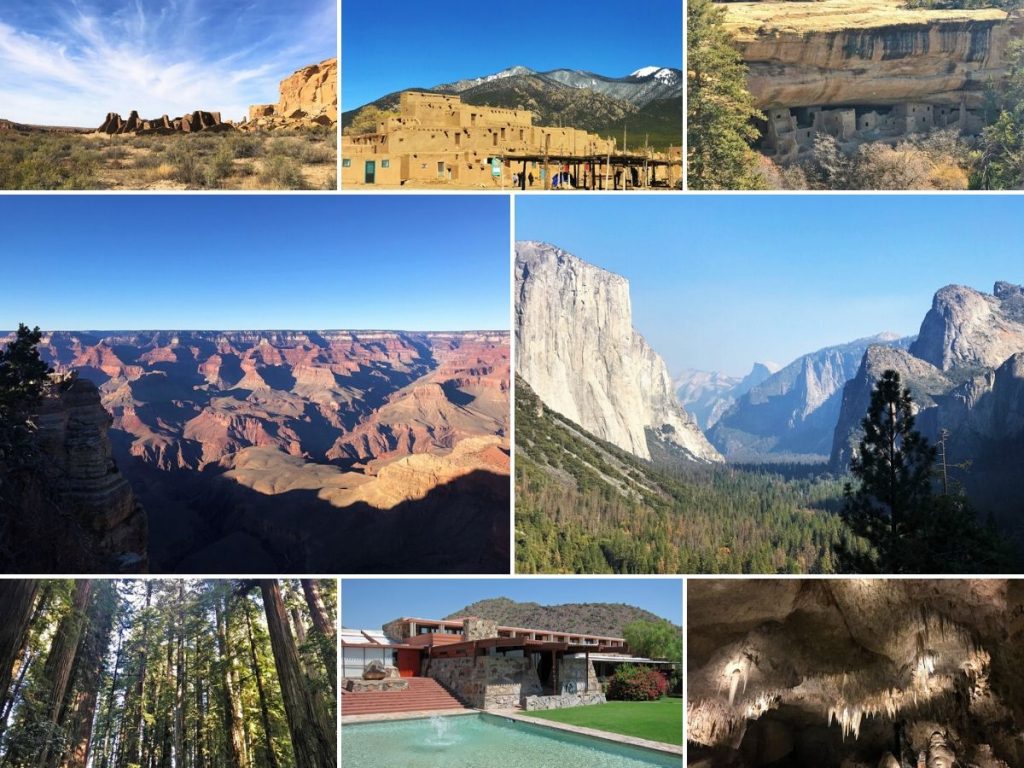
Grand Canyon – World Heritage Site
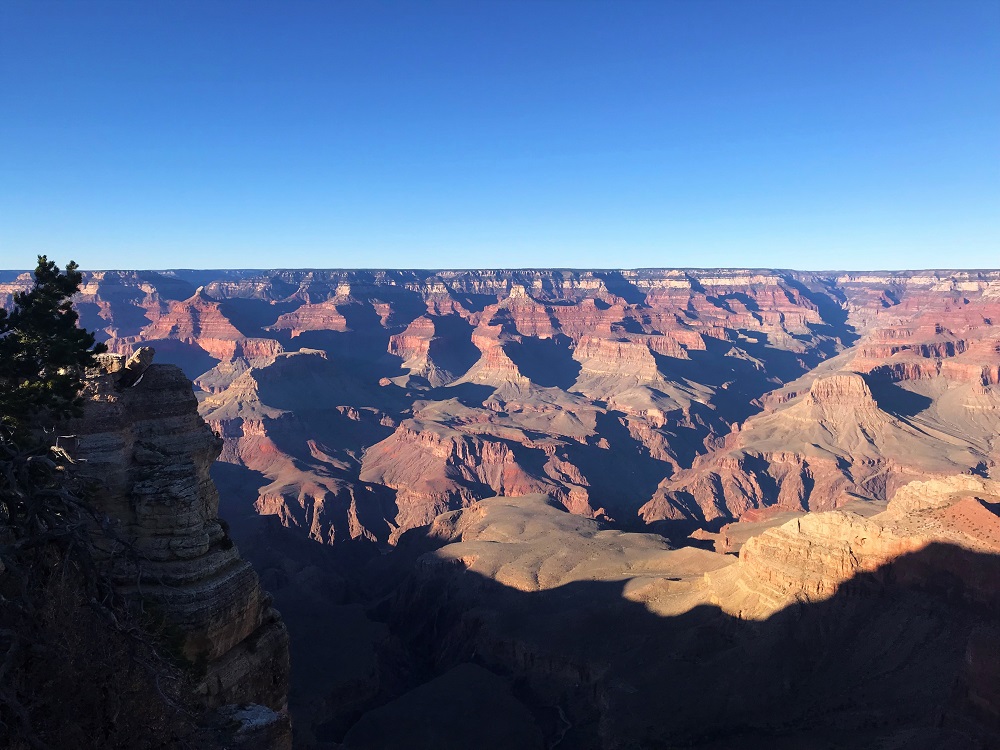
The Grand Canyon is one of the most impressive natural formations in the entire world. It’s located in Arizona on ancestral lands of the Hopi, Hualapai, Havasupai, Southern Paiute, and Navajo. The canyon covers an enormous 1.2 million acres (485,000 hectares). Declared a World Heritage Site in 1979, the Canyon itself is absolutely colossal. It’s 450 kilometres from end-to-end, 6 kilometres wide at the narrowest point, stretching out to a yawning 30 kilometres at the widest point.
Descending into the Canyon from the South Rim, it’s almost two kilometres straight down to the Colorado River. I also loved the variety in the rock strata as well, tracing the twists and turns of the river as it carved the canyon over millions of years.
I originally visited the canyon as a young boy in the early 1990s and it made a distinct impression on me. I’m happy to report that returning as an adult made just as much of an impression! It really is so majestic that it feels like you’re standing in front of an oil painting.
But perhaps the best quote is from Teddy Roosevelt, who said after a visit in 1903:
“The Grand Canyon fills me with awe. It is beyond comparison—beyond description; absolutely unparalleled through-out the wide world… Let this great wonder of nature remain as it now is. Do nothing to mar its grandeur, sublimity and loveliness. You cannot improve on it. But what you can do is to keep it for your children, your children’s children, and all who come after you, as the one great sight which every American should see.”
Yosemite National Park – World Heritage Site
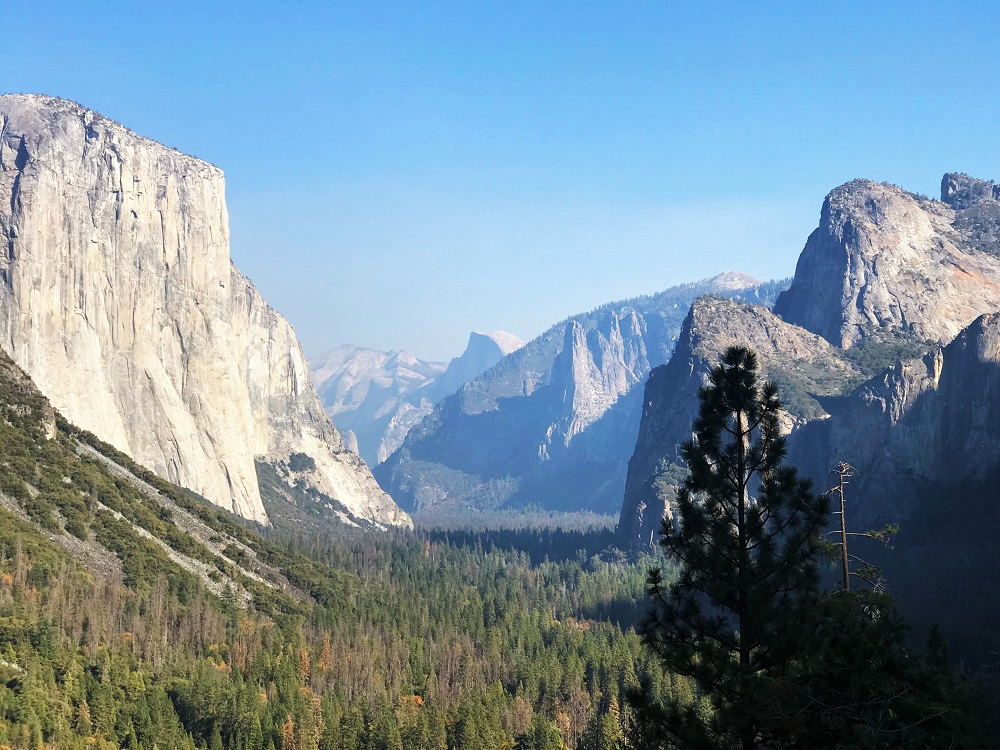
California is blessed with some truly beautiful landscapes, and Yosemite is among the best. Yosemite National Park is located in central California, and the World Heritage Site here is based largely on the Yosemite Valley in the Sierra Nevada mountain range.
There’s an astonishing number of beautiful and famous landmarks in the area: looming granite domes like El Capitan and Half Dome, the thundering Bridalveil Falls, groves of ancient giant sequoia trees, Lyell Glacier, the gorgeous Merced River, and many more besides.
And there’s just so much variation here as well. Beautiful meadows, high alpine country, and rolling hills. We spent two full days in the park exploring various landmarks and viewpoints, and felt like we’d hardly scratched the surface of this mesmerising place.
Carlsbad Caverns – World Heritage Site
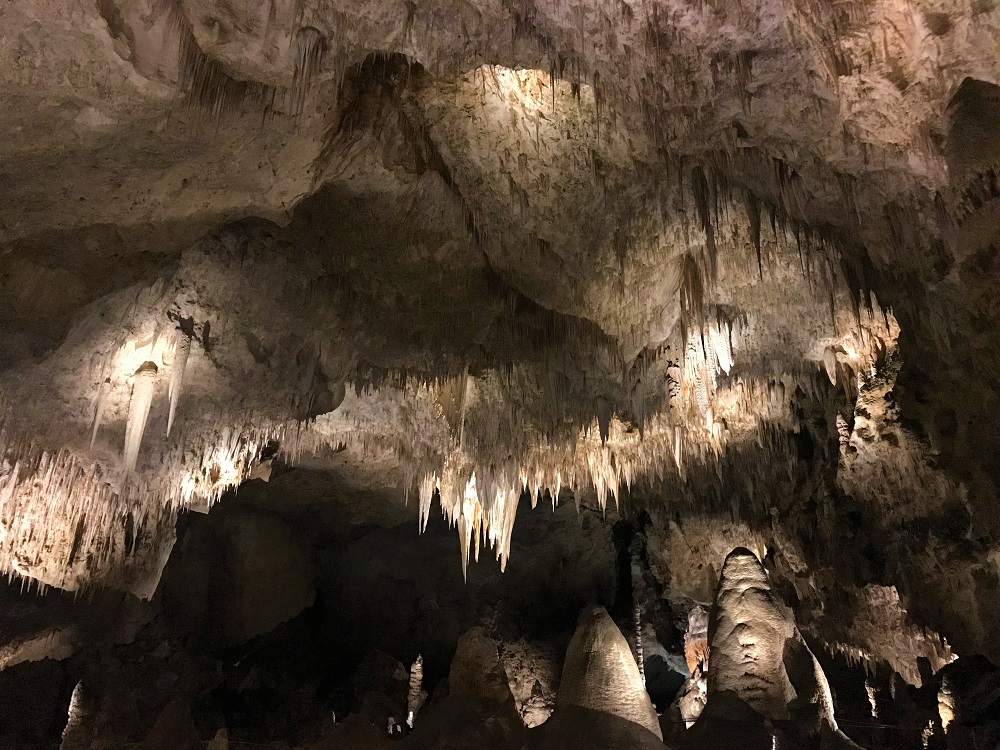
Located in the south-eastern corner of New Mexico, this World Heritage Site covers the impressive Carlsbad Caverns. The Caverns are ranked among the largest known cave sites in the entire world, and boast of around 120 known caves with more constantly being discovered.
Formed over millions of years by water dripping through the limestone rock, the formations in here are absolutely stunning. There’s enormous stalagmites thrusting up from the floor, and huge dangling stalactites emerging from the ceiling. Some of the chambers are just massive! The largest, known as the Big Room, is thousands of square feet in size.
But I think my favourite feature is known as the Bottomless Pit. Early explorers dropped stones into the Pit to gauge its depth, but never heard any stones strike the bottom. We now know that “Bottomless” pit is actually about 45 metres deep and that the floor is covered with soft dirt, explaining why stones dropped in never made any noise!
Although Carlsbad Caverns is in quite a remote location, it’s absolutely worth a visit whenever you’re in the South West USA.
Taos Pueblo – World Heritage Site
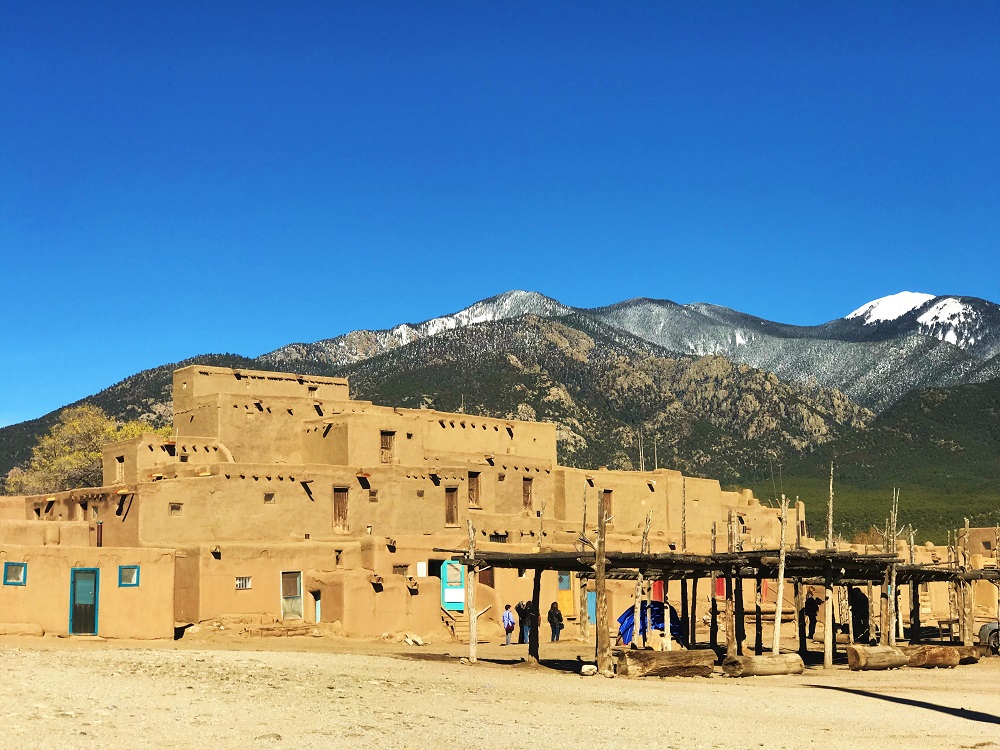
So far we’ve been discussing the magnificent natural World Heritage Sites of the South West USA. But the cultural World Heritage Sites are just as important. Taos Pueblo is believed to be the oldest continually-inhabited site in North America. It’s located in the north of New Mexico, and is home to the Taos people, a tribe of Puebloan people.
The pueblo itself is a collection of red multi-storey adobe houses, set against the spectacular Taos Mountains and surrounded on both sides by small rivers. The community was established probably around 1000 AD, and has been occupied ever since. It’s part of a larger reservation that’s home to around 4,500 people, though most of the pueblo residents also maintain homes in nearby towns and don’t live there full-time.
We spent a wonderful morning exploring the pueblo, guided around by a resident who explained some of the tribal customs and beliefs. He also spoke candidly about the pueblo’s history after contact with the Spanish, and the impact it had on their community. As Australians, Native American culture is something we’ve had very little exposure to. So this visit was a fantastic spot to gain knowledge and understanding of a very unfamiliar culture, which made it a super rewarding visit.
Chaco Culture – World Heritage Site
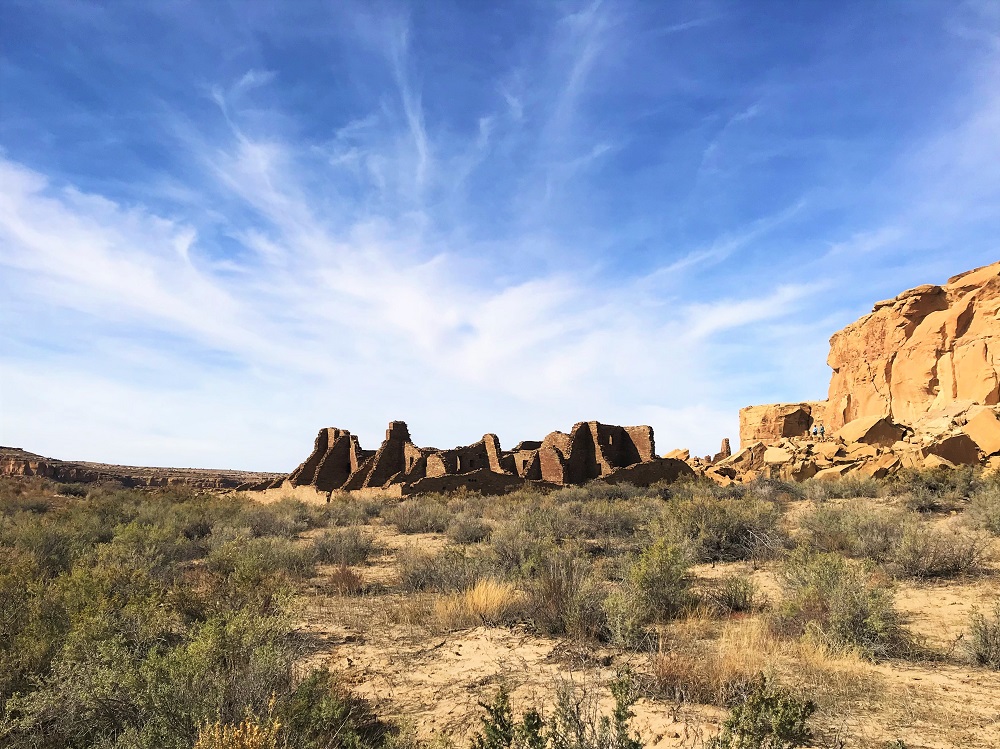
Still in New Mexico, Chaco Culture is the second of the three Native American World Heritage Sites in the South West USA. Located in a remote canyon, known as Chaco Canyon, this site is a large archaeological park with some of the most spectacular ancient ruins in the United States. It was home to the Ancestral Puebloan peoples between around 900-1150 AD before being suddenly abandoned, and their modern Pueblo and Hopi descendants retain aural records from that time.
In the canyon itself there’s 15 large building complexes made of stone, timber and adobe. Astonishingly, these were the largest buildings in North America until the 19th century! Pueblo Bonito is the most impressive building here, a huge semi-circular great-house almost 2 acres in size, and containing 650 rooms. It’s honestly enormous, and takes hours to explore properly. Within the complex you’ll also find over thirty kivas, which are circular ritual rooms. Traces of cacao beans have also been found, demonstrating ancient trade links between the native peoples further south in modern Mexico.
All up, it’s a fascinating site and one that’s still very mysterious. Some have suggested that the great-houses may not have been houses at all. It’s also not known why the buildings were constructed at such enormous expense and then abandoned relatively quickly. But honestly, the mystery is really just part of the fun with ancient World Heritage Sites!
Mesa Verde – World Heritage Site
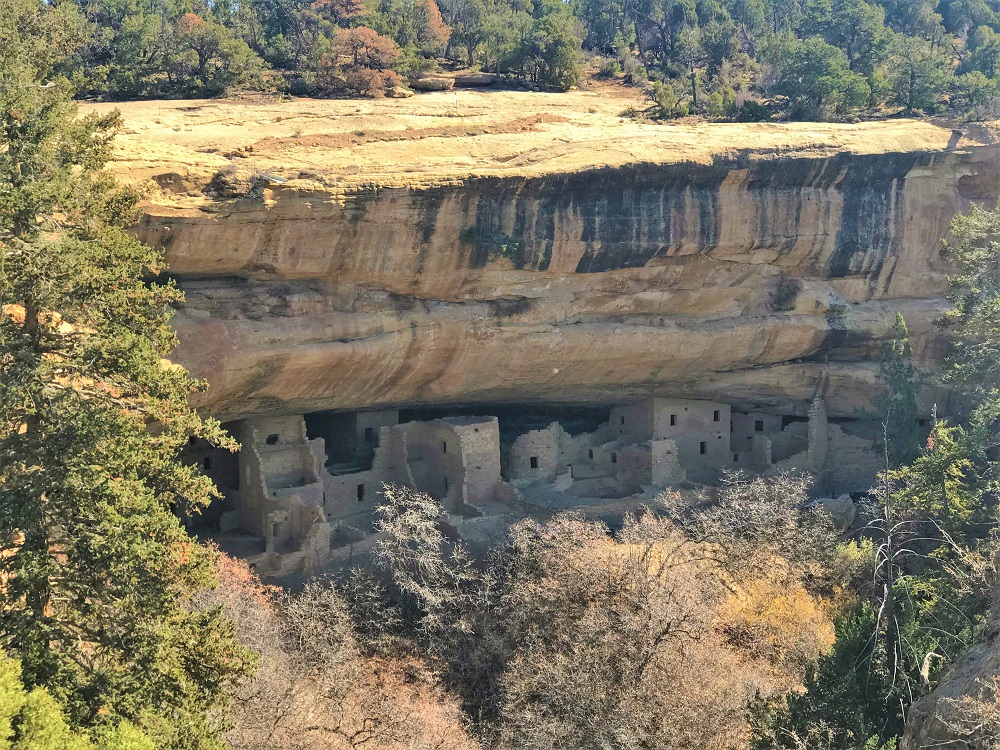
Heading north out of New Mexico, we arrive at Mesa Verde in southern Colorado. This large mountain area is one of the largest archaeological preserves in the United States. Inhabited by Native Americans since around 7500BC, Mesa Verde reached the height of its importance in the 12th century AD. Around this time, hundreds of “cliff houses” were built along the walls of the canyon, in many cases underneath overhanging rocks.
The most impressive of these is the enormous Cliff Palace, over 700 years old and with over 150 rooms and kivas. Nearby you’ll also find the beautiful Long House, again with about 150 rooms. There’s also the impressive Spruce Tree House and the imposing Square Tower House. It snows quite heavily here, so the Houses were already closed for the season when we visited. But they were very impressive to see from the nearby lookouts!
Although the best preserved ruins here are about 800 years old, there are excavations going back several thousand years as well. It was fascinating to explore the wider area and see how the dwellings and the culture had evolved. Mesa Verde was abruptly abandoned and never repopulated, just like Chaco Canyon, likely due to a series of droughts. What a fascinating place!
Redwood National Park – World Heritage Site
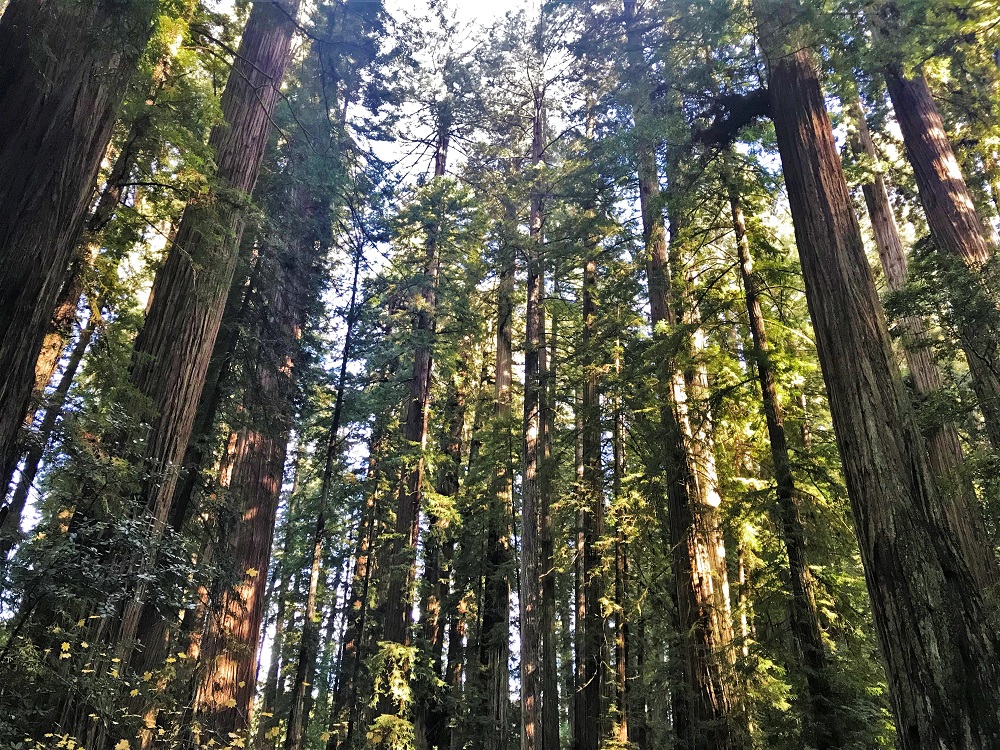
Redwood National Park is located in the far north of California, not far from the Oregon border. It’s over 500 square kilometres in size, and is one of the last remaining stands of old-growth redwood forests in the entire world. The iconic sight here is the coast redwood tree, closely related to the giant sequoias of Yosemite National Park. These enormous trees are the tallest and largest in the world, and among the oldest trees as well.
The tallest known tree here is an incredible 115 metres, and several other fallen trees have been measured at about the same height. The “Lost Monarch” tree is the largest by mass, measuring almost 8 metres in diameter and 98 metres in height – truly staggering. The redwoods typically live for 500-700 years, though some are estimated at over 2000 years. That makes them among the oldest living organisms on earth.
Atmospheric conditions mean that the forest area receives a lot of rain and fog for most of the year, which makes it a fantastic place to visit. The gigantic trees reaching up endlessly into the mist is extremely captivating, and not a sight that I’ll soon forget.
20th Century Architecture of Frank Lloyd Wright – World Heritage Site
Our last World Heritage Site in the South West USA is quite different to the others! Added to the list in 2019, this entry covers eight buildings designed by Frank Lloyd Wright. They showcase his incredible style of organic architecture. These eight buildings are in various locations, but the South West USA is home to two of them. Hollyhock House in Los Angeles, California, and Taliesin West in Scottsdale, Arizona.
Starting at Hollyhock House, it’s located on famous Hollywood Boulevard in East Hollywood. The House was built between 1918-21 as the centrepiece of an artist colony that was never actually built. The name Hollyhock refers to a flower, and the motif is everywhere through the house, inside and out. The exterior also has unusually tilted walls, in what’s sometimes referred to as the “Mayan Revival” style.
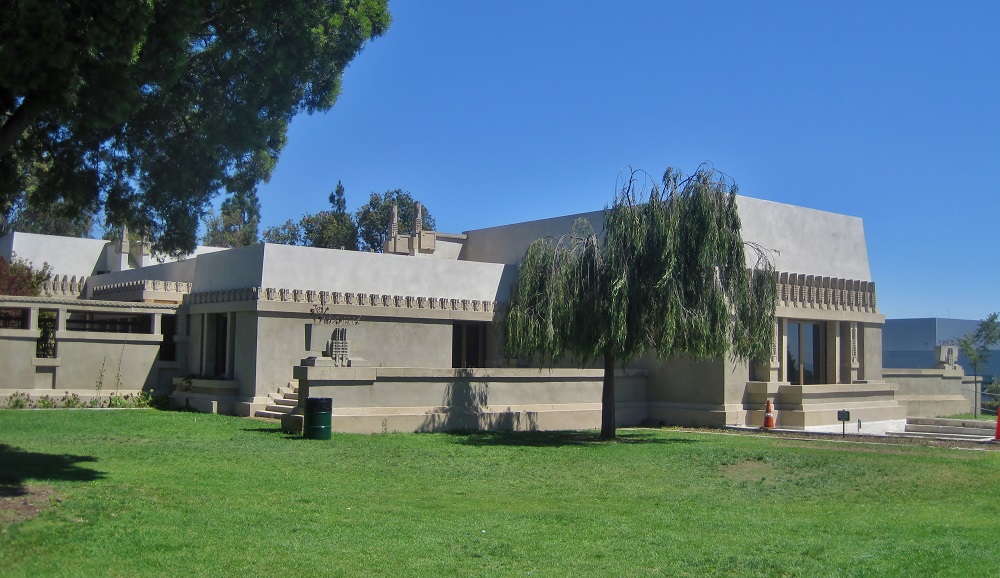
Image by Teemu008, https://commons.wikimedia.org/w/index.php?curid=69209888
Moving across the border into Scottsdale, Arizona, you’ll find Taliesin West, designed and built by Wright in the 1930s. Conceived as his school and winter home, Wright spend most winters living there until his death in 1959. It sits in the Sonora Desert, and Wright employed his signature “organic architecture” style throughout the property. It’s made largely of local materials like stone and timber. The colours use a similar palette to the surrounding desert, and the lines inside and out complement the landscape. These days it’s a school of architecture, a museum, and home to the Frank Lloyd Wright Foundation.
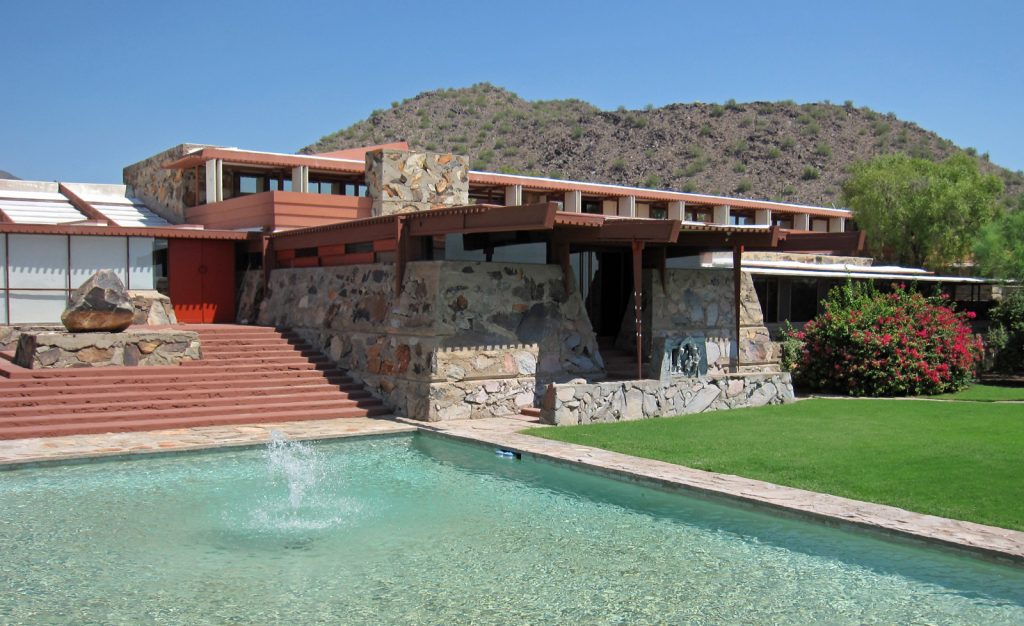
Sadly these properties were added to the World Heritage List after our most recent visit to the South West USA. But we can’t wait to get back there and see some in person!
Conclusion
All up, the World Heritage Sites of the South West USA are an outstanding bunch. An intriguing mix of beautiful nature, incredible cultural history, and a wonderful modern addition as well. While you’re here, consider checking out our guide to Catalan Modernism World Heritage Sites, or maybe the 7 Best UNESCO World Heritage Gardens. And as always, don’t forget to Subscribe to our YouTube Channel to never miss another video.
